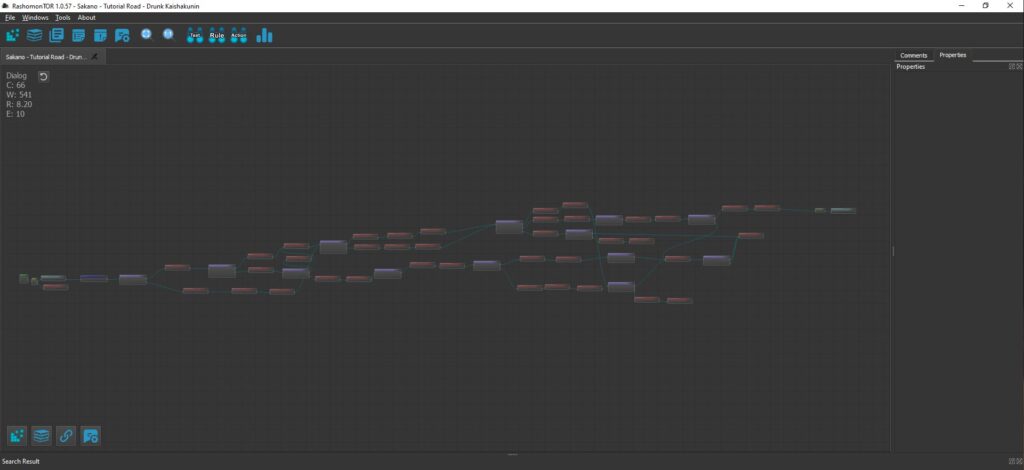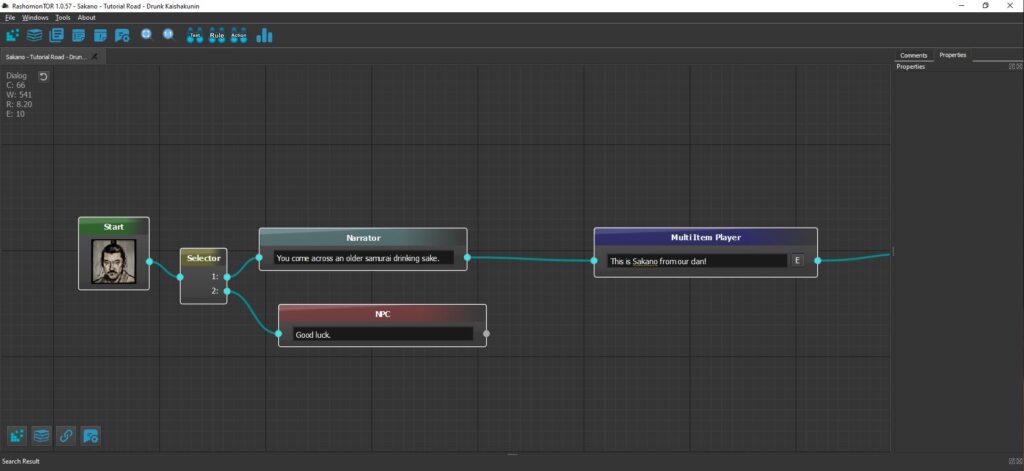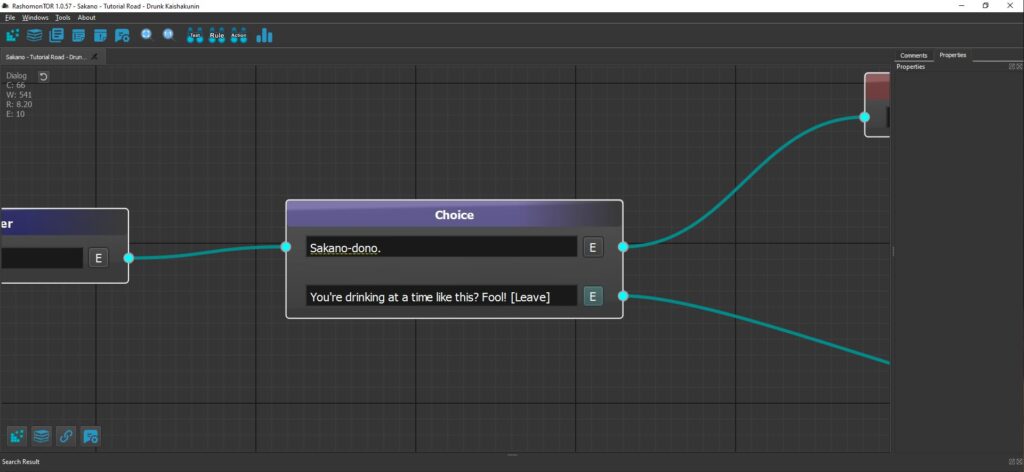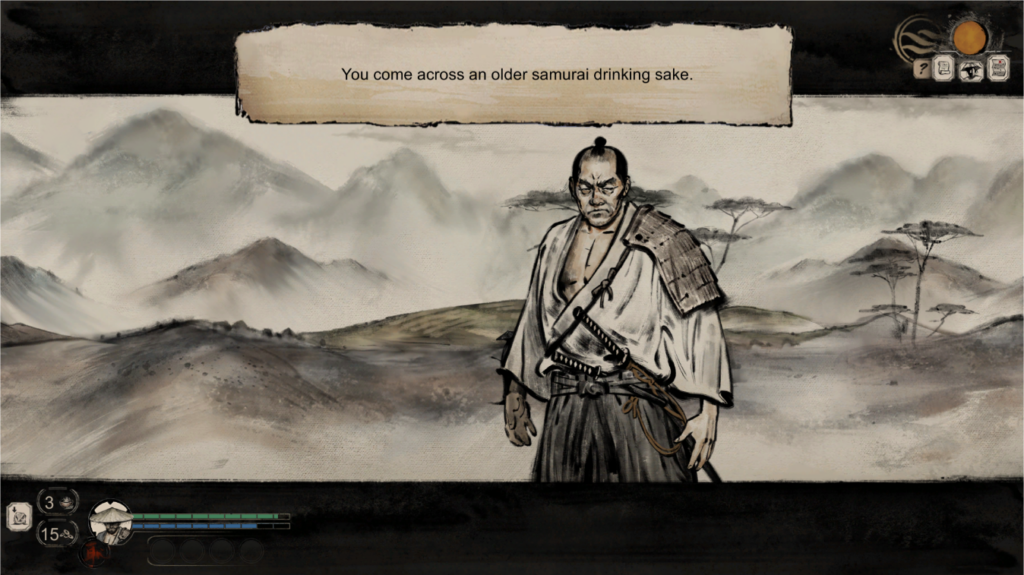
In our previous blog post, we introduced Rashomon, our in-house narrative design tool, and explained how it streamlines our creation process. Today, we’ll dive deeper into Rashomon’s capabilities and share a sneak peek of some of Tale of Ronin’s dialog.
As covered previously, Rashomon uses graphs and a variety of different features to build nonlinear dialogues and encounters. Within each graph, narrative designers link distinct nodes into a connected structure that is easy to follow visually. In the screenshot above of a basic conversation from the Tale of Ronin tutorial, you can see how the narrative diverges and splits, creating different branches.

Looking a bit closer, the connection between nodes becomes clearer. Each graph begins with a Start node. This node is set with specific conditions, and narrative designers can expand outward from the start node by connecting it to other nodes (as represented by the blue lines in the image above).

Every unique node represents a different action or feature, such as the Choice node, which provides player options for in-game conversations. Being able to visually track the different dialogue branches is extremely valuable. It allows us to create a clear and concise structure that can be shared or collaborated upon without confusion.


Using the same graph and implementing it into the game, we can see this encounter come to life. As shown in the previous two screenshots of this graph, each node is translated into a specific aspect of the designed dialog.
As we continue our work on Tale of Ronin, we are excited to share more glimpses into our production and creative process. Stay tuned for more updates to come!